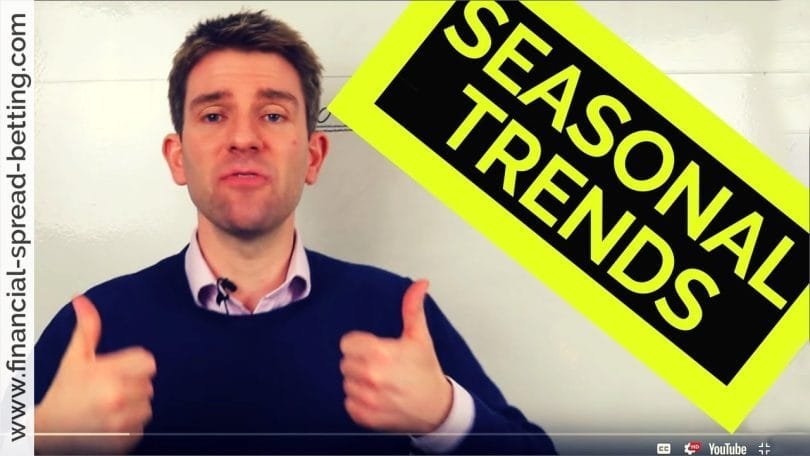Kondratieff Wave
Nikolai Kondratieff is alleged to have discovered a 54 year cycle which affects much of economic activity. Working in the 1920s, he examined records of prices back to 1789. The cycle is supposed to influence interest rates, commodities, copper, stocks and other prices. There has been a lot of criticism of it, in part because of the difficulty in getting any relevant and consistent information on the action of the markets so long ago.
Seasonal Cycles
It’s obvious that many markets are affected by the annual seasonal cycle, and that it is particularly felt by the agricultural markets. For instance, soybeans usually top between April and June and are low between August and October. Oil peaks in October and drops at the end of winter, presumably because of heating demand. But copper, silver and gold also exhibit annual seasonal tendencies. Even the US dollar is affected, with a low usually occurring in January.
The stock market usually has a weak September, and the strongest month is December. February is weak, and so is June, but March and April are strong, and so is July.
Presidential Cycle
Another well known cycle, the Presidential cycle, is four years, coinciding with the election of a new President. In fact, each of the years has a different average return. Generally the pre-election year and election year itself are strong, but the post-election and mid-years are weak.
Commodity Cycles
The dominant cycle for the commodity market is 28 days, based on calendar days, or 20 days of trading. What this means is that you can expect a cyclical low point on commodity charts every four weeks, and we saw this effect in a previous module. We’ve also seen the simple four-week rule trading system in module 6. There have been theories that the lunar cycle is in some way responsible for this, but it’s likely that the effect is weak and easily overpowered by other factors.

